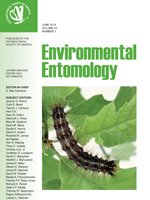Responses of plants to grazing are better understood, and more predictable, than those of consumers in North American grasslands. In 2003, we began a large-scale, replicated experiment that examined the effects of grazing on three important arthropod groups—beetles, spiders, and grasshoppers—in shortgrass steppe of north-central Colorado. We investigated whether modifications of the intensity and seasonality of livestock grazing alter the structure and diversity of macroarthropod communities compared with traditional grazing practices. Treatments represented a gradient of grazing intensity by cattle and native herbivores: long-term grazing exclosures; moderate summer grazing (the traditional regime); intensive spring grazing; intensive summer grazing; and moderately summer-grazed pastures also inhabited by black-tailed prairie dogs (Cynomys ludovicianus Ord). Beetles and spiders were the most common groups captured, comprising 60% and 21%, respectively, of 4,378 total pitfall captures. Grasshopper counts were generally low, with 3,799 individuals observed and densities <4 m-2. Two years after treatments were applied, vegetation structure differed among grazing treatments, responding not only to long-term grazing conditions, but also to the short-term, more-intensive grazing manipulations. In response, arthropods were, in general, relatively insensitive to these grazing-induced structural changes. However, species-level analyses of one group (Tenebrionidae) revealed both positive and negative effects of grazing treatments on beetle richness and activity-density. Importantly, these responses to grazing were more pronounced in a year when spring-summer rainfall was low, suggesting that both grazing and precipitation—which together may create the greatest heterogeneity in vegetation structure—are drivers of consumer responses in this system.
How to translate text using browser tools
1 June 2014
Community Responses of Arthropods to a Range of Traditional and Manipulated Grazing in Shortgrass Steppe
T. A. Scott Newbold,
Paul Stapp,
Katherine E. Levensailor,
Justin D. Derner,
William K. Lauenroth
ACCESS THE FULL ARTICLE
It is not available for individual sale.
This article is only available to subscribers.
It is not available for individual sale.
It is not available for individual sale.

Environmental Entomology
Vol. 43 • No. 3
June 2014
Vol. 43 • No. 3
June 2014




